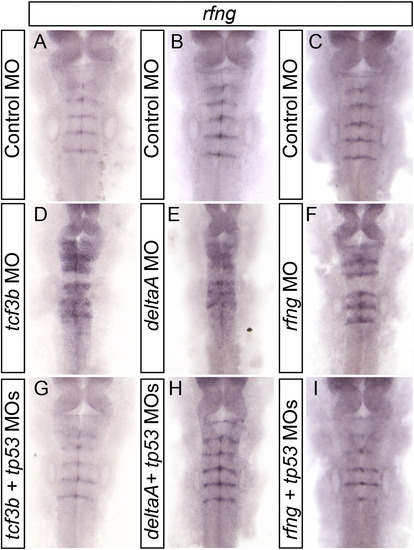FIGURE
Fig. S1
- ID
- ZDB-FIG-110317-7
- Publication
- Gerety et al., 2011 - Morpholino artifacts provide pitfalls and reveal a novel role for pro-apoptotic genes in hindbrain boundary development
- Other Figures
- All Figure Page
- Back to All Figure Page
Fig. S1
|
Additional morpholinos cause Tp53-dependent boundary domain expansion. Embryos injected with control (A–C), tcf3b (D), deltaA (E), rfng (F), tcf3b + tp53 (G), deltaA + tp53 (H), and rfng + tp53 (I) morpholinos, and hybridized with probe to boundary marker rfng. Tcf3b, deltaA, and rfng MOs alone induce an expansion of rfng expression (compare A–C with D–F), that is rescued when tp53 MO is co-injected (compare D–F with G–I). |
Expression Data
Expression Detail
Antibody Labeling
Phenotype Data
Phenotype Detail
Acknowledgments
This image is the copyrighted work of the attributed author or publisher, and
ZFIN has permission only to display this image to its users.
Additional permissions should be obtained from the applicable author or publisher of the image.
Reprinted from Developmental Biology, 350(2), Gerety, S.S., and Wilkinson, D.G., Morpholino artifacts provide pitfalls and reveal a novel role for pro-apoptotic genes in hindbrain boundary development, 279-289, Copyright (2011) with permission from Elsevier. Full text @ Dev. Biol.

